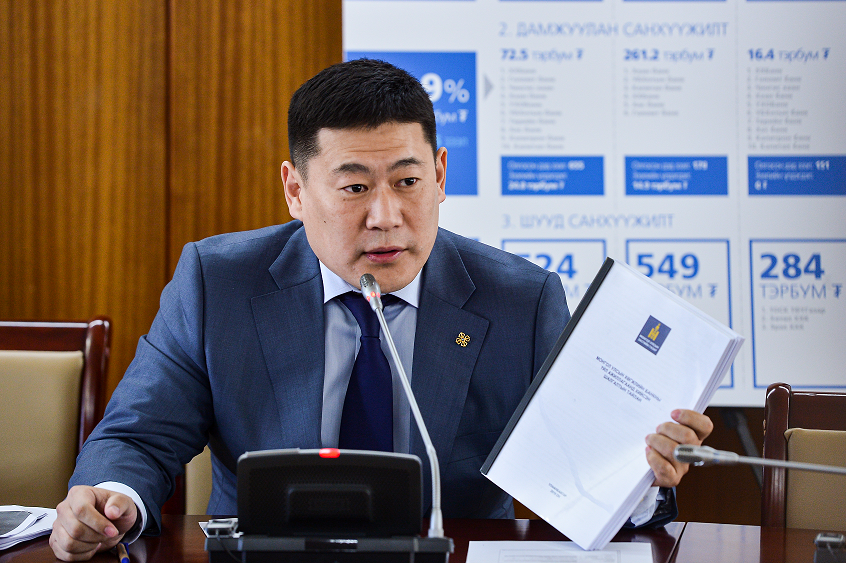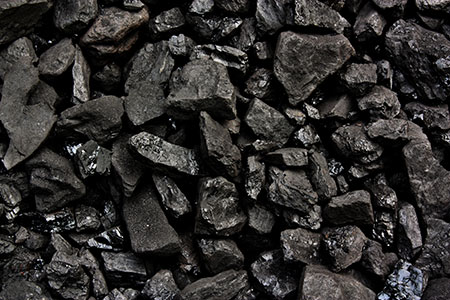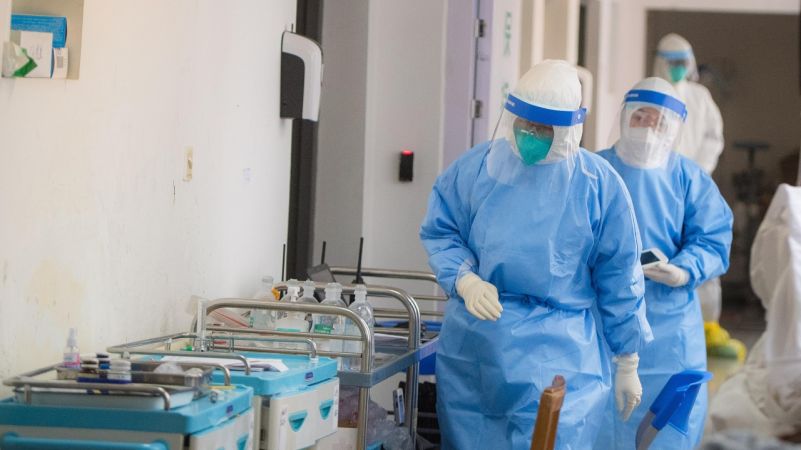Events
| Name | organizer | Where |
|---|---|---|
| MBCC “Doing Business with Mongolia seminar and Christmas Receptiom” Dec 10. 2025 London UK | MBCCI | London UK Goodman LLC |
NEWS

Mongolia cancels celebrations of Int'l Children's Day www.xinhuanet.com
Mongolia has decided not to publicly celebrate the upcoming International Children's Day due to the COVID-19 pandemic, local media reported Tuesday, citing the country's State Emergency Commission.
The decision made by the commission is part of the country's efforts to prevent a further spread of the pandemic, as gatherings during the holiday could lead to surging infections.
International Children's Day was established in 1949 by the Women's International Democratic Federation to safeguard the rights and interests of children. Currently, many countries annually celebrate the day on June 1.
In 1996, Mongolia officially designated the day as an official public holiday. Enditem

US Senators Say Mongolia’s Democracy Is Under Threat www.theepochtimes.com
U.S. senators have expressed concern about the current political situation in Mongolia, writing to Secretary of State Anthony Blinken last week, urging the State Department to make its voice heard.
Sen. Marco Rubio (R-Fla.), a member of the Senate Foreign Relations Committee, and Sen. Patrick Leahy (D-Vt.), chairman of the Senate Budget Allocation Committee, wrote in the letter: “Recent political developments may portend for the future of democracy in the country. As you know, Mongolia has been a remarkable democratic success story, particularly considering how it is precariously situated between two authoritarian neighbors, the People’s Republic of China and the Russian Federation, the former of which has expressed expansionist designs toward Mongolia in the past and may still harbor them.”
Mongolia’s political system is “semi-presidential,” with a parliament and a publicly-elected president that chairs the National Security Council and acts as commander-in-chief of the armed forces.
On April 29, one month before the presidential election, the Mongolian People’s Party (MPP), which has a majority in parliament, hastily initiated a law to change the rules of the presidential election and approved it within seven minutes, removing incumbent President Khaltmaagiin Battulga from the ballot. The law prohibits the president being reelected, because he was very likely to be reelected.
The party attempted at taking the jurisdiction under its control by influencing appointment and dismissal of members of the Constitutional Court, whose main responsibility is protecting the Constitution, in addition to giving them tasks and requiring the court to execute the given tasks, not considering that their actions are weakening the independence of the Court. They are doing it explicitly and shamelessly, said the President in his The President’s Address to the Nation on Protecting Mongolia’s Democracy on April 23.
Various attempts to control the election have been made by a MPP members, some of them led Mongolia under communist rule until the 1990 democratic revolution and are now seeking to regain power and restore one-party rule, according to the Presidential Media Department,
“Recent controversial actions taken by the parliament, the judiciary, and the president—including the hasty passage of an amendment to the Presidential Election Law that barred the incumbent from seeking reelection, the removal of a constitutional court judge seen as likely to challenge the constitutionality of the parliament’s action, and the president’s emergency appeal to the Supreme Court to disband the ruling party—have sparked a political crisis that could undermine the credibility of the presidential election on June 9,” the letter states.
“We are concerned that this chain of events could make Mongolia increasingly vulnerable to the Chinese Communist Party’s (CCP) efforts to undermine Mongolia’s democracy, rule of law, and its judicial system through corruption of and collusion with certain Mongolian leaders.”
In November 2016, following a visit by the Dalai Lama, the CCP punished Mongolia with economic sanctions. Tsend Munkh-Orgil, then-foreign minister and a member of MPP, publicly supported Beijing’s demand that capital Ulaanbaatar prohibit the Dalai Lama from ever visiting the country again, an unprecedented move given Tibetan Buddhism is Mongolia’s dominant religion.
The MPP general secretary reportedly made similar comments on the MPP’s centennial anniversary in March 2021, and several formal exchanges between the CCP and MPP have taken place in recent years involving the general secretary and other senior MPP officials, according to the letter.
Because of its unique geopolitical positioning, Mongolia’s relationship with America is not insignificant and provides opportunities for both countries.
The State Department’s Congressional Budget Justification for Foreign Operations (pdf) asserts that the “the main purpose of U.S. assistance to Mongolia is to ensure that the United States remains an advantageous partner over its geographical neighbors, Russia and China, and to give Mongolia greater latitude in defining its independent foreign and security policy.”
The senators concluded: “In light of these developments, we respectfully urge the State Department to engage in dialogue with all political parties involved with the aim of deescalating the growing tensions between them, ensuring that no one is arbitrarily denied the standing to run for election and each political party has the right to nominate the candidate of their choice to appear on the presidential ballot, and encouraging the maintenance of an impartial judiciary.”
“Democracy promotion must remain a core element of our foreign policy, particularly as authoritarian forces such as the CCP are working tirelessly to erode these values around the world” they added.

Wool incentives totaling MNT 31 billion granted to 88 thousand herders in 2020 www.montsame.mn
The government of Mongolia annually provides herders with incentives to increase agricultural output and encourage supply of agricultural products.
Last year, a total of 90,064 herders and entities owning livestock animals were registered to receive the wool incentives for supplying camel and sheep wool to 85 factories. According to the Ministry of Food, Agriculture and Light Industry, wool incentives totaling MNT 30.7 billion were granted to eligible 88,669 herders out of all registered herders. The herders had supplied a total of 18,566 tons of sheep wool and 676 tons of camel wool to 78 factories in 2020.
The wool incentive program is being carried out by the Agriculture Ministry in accordance with a 2020 regulation on cash incentives for herders supplying sheep and camel wool.

Financial Regulatory Commission presents financial market review for 2021 first quarter www.montsame.mn
A virtual press conference by the Financial Regulatory Commission (FRC) to present the Financial Market Review of the first quarter of 2021 was held on May 6.
The nonbank finance market (including the capital market, insurance, NBFIs, and SCCs) share of GDP reached 17.5% in the first quarter of 2021; made up of:
Capital market: 9.9%,
Insurance market: 1.1%,
NBFIs: 5.7%, and
SCCs: 0.8%
The FRC regulated and supervised 3,302 entities, and 2,429 insurance agents. The former consisted of the following:
315 joint stock companies, and 281 professional participants in the securities market,
326 insurance companies, professional participants, and auditors,
530 NBFIs,
249 SCCs,
185 REBs, and
438 DPMS and their 978 branches.
Capital market:
Market capitalization increased by 48.5% to MNT3,695.1 billion, compared to same period in 2020.
Liquidation of stocks increased by 1.4 percentage points to 1.8%. The TOP 20 Index increased by 17,732.0 points to 34,635.7 points.
Volume of trading, among the MNT71.8 billion worth of securities, was as follows:
Stocks: 91.8%,
Asset-backed securities: 5.7%,
Investment fund: 1.8%, and
Corporate bond: 0.7%.
Trading on agricultural commodities exchange increased by 145.1%; and MNT69.3 billion worth - of five types of goods - were traded.
Insurance market:
Total assets increased by 14.6% to MNT401.2 billion, and the reserve fund increased by 9.3% to MNT172.6 billion, compared to same period in 2020.
Total premiums, of general and life insurance, decreased by 4.2% to MNT39.0 billion, and total premium of reinsurance decreased by 16.4% to MNT10.9 billion.
Total indemnity expenses decreased by 21.3%, and MNT12.3 billion was paid (amounting to 31.6% of total premiums).
NBFIs:
530 NBFIs operated, and their total asset increased by 17.6% to MNT2.1 trillion.
The total balance of loans increased by 11.8% to MNT1.4 trillion, and 48.5% of loan balance was consumer loans.
85.3% of the total loan balance was accounted to by individuals, and 14.7% was entities.
Due to the increased loan supply (and the access to loan services) the number of borrowers increased 1.4-fold to 610,100 and the number of total customers was 3.4 million (with double counting). The introduction of products and services based on technology in the market influence the increase of the access of loan service.
The monthly weighted average interest rate decreased by 0.1 percentage points to 2.9%.
The average loan per borrower was MNT2.3 million.
Borrowers of FinTech numbered 362,900 (59.5% of total borrowers), and the average loan per FinTech borrower was MNT270,700.
SCCs:
249 SCCs provided services for their 75,002 members.
Total assets increased by 21.5% to MNT278.9 billion. The amount of savings reached MNT201.4 billion (72.2% of total assets).
The monthly weighted average savings interest rate decreased by 0.1 percentage points to 1.4%.
The monthly weighted average interest rate decreased by 0.7 percentage points to 2.4%.
The balance of total loans increased by 11.1% to MNT192.1 billion, compared to same period in 2020. Of total loan balance, 3.64% were non-performing loans.
The number of depositors was 40,166, and borrowers were 38,353.
Real estate brokers:
Entities with licenses issued by the FRC were as follows:
185 entities, and their 206 brokers and 1,219 agents.
Through 935 deals (with double counting), 290 REBs/agents bought and sold real estate; amounting to a total area 98,600m2 and a value of MNT127.2 billion.
Through 390 deals (with double counting) REBs/agents rented and leased real estate amounting to a total 39,300m2 and a value of MNT2.8 billion.
Dealers in precious metal and stones:
Entities and individuals with licenses issued by the FRC were as follows:
Entities (dealers in precious metals and stones, and dealers in products made of them): 34
Individuals (dealers in precious metals and stones, and dealers in products made from them): 58
Individuals (dealers in precious metals and stones): 117
Individuals (dealers in products made from precious metals and stones): 229
Precious metals with a value of MNT103.6 billion were bought and MNT101.9 billion sold.

Mongolia to openly announce 100 projects to develop the economy www.montsame.mn
The Government of Mongolia is currently planning to implement 100 projects on recovering the economy after the pandemic.
“A discussion will be held to receive suggestions from the public and entities from today on May 11,” announced Prime Minister L. Oyun-Erdene during his report on the works implemented by the Government in the first 100 days since its formation. Furthermore, as the Government cannot single-handedly implement large-scale projects, the 100 projects aimed at developing the country’s economy in 2021-2030 will be announced to the public.
He said, “The current Government does not have the capacity to implement even the first 4 or 5 projects. The Gashuunsukhait railroad will be commissioned on July 1 next year. With the construction of the Tavantolgoi Thermal Power Plant completed, we will be able to reduce our costs by USD 300-400 million. The pipeline of the oil refinery will also be constructed. The Government will spend its reserves with the implementation of projects on Erdeneburen hydropower plant, the fifth thermal power plant, and the extension of the third thermal power plant as well as the Ulaanbaatar-Darkhan road construction. However, these 100 projects need to be implemented. It is not necessary for the Government to implement them alone.
Coal takes about 37-40 percent of Mongolia’s total export. More specifically, gold, copper, iron ore, and coal make 93 percent of the country’s export. However, the price of our main export, coal, is estimated to drop from USD 300 million to USD 200 million in 2020-2040, decreasing by 33 percent. As countries of the world are working towards reducing its coal use, all we have is 10 years to put in all our efforts. If we lose this window of opportunity, issues will begin to arise starting from the state budget. Thus, it is of utmost importance that we launch our 100 projects without losing any time. By successfully implementing the projects, it is projected that the current economy will grow by 3 times and the GDP per capita will increase to USD 8-10 thousand.”
The Government plans to reform the current policy for the mining sector. More specifically, while Mongolia conducted operations on exploration and extraction, works will begin to be more focused on value-added mining products. Plans such as the construction of a coal washing plant at Tavantolgoi is also included in the measure of works to be implemented in the policy framework. “With the plant being put into operation, it will become possible for the price of coal to increase from USD 60-63 to USD 80-100 by transporting it to Gashuunsukhait,” said the Prime Minister. Furthermore, large-scale construction works such as a copper concentrate plant, oil refinery, and metallurgical plant are planned to be completed. In order to increase sales, a decision was also made to establish a Mineral Exchange, which will allow the mineral resources extracted from large deposits to be openly traded on the global market. Moreover, the profits of its sales will be brought to citizens and entities by providing support for education, healthcare, pension, SMEs, and businesses through the Sovereign Wealth Fund, Development Fund, and Unified Accumulation Fund. The legal framework regarding this matter is currently being developed.
Additionally, the sectors of agriculture, energy, information technology, and the creative industry will be developed. The cultural sector must have a method of supporting many more artists and bands such as The Hu to form and have success as well as the filming of Hollywood movies in Mongolia through a tax policy, highlighted Prime Minister L. Oyun-Erdene. The 100 projects will also include projects on resolving the transport and logistics issue of Mongolia as a landlocked country alongside social reform. Moreover, matters such as improving the quality of life, merging public universities, reforming the educational sector, transitioning into a system that involves all citizens in annual check-ups, and 25 changes to be made in order to improve governance will be resolved.
Meetings have begun between the government and representatives of top entities and donor organizations starting from today.

Russia to cooperate with China on production of Sputnik V vaccine www.chinadaily.com.cn
MOSCOW - The Russian Direct Investment Fund (RDIF) has signed deals with three Chinese biopharmaceutical companies for the production of over 260 million doses of its Sputnik V vaccine against the coronavirus in the past weeks, according to statements published on the website of the RDIF.
The first contract was signed with China's Shenzhen Yuanxing Gene-tech Co., Ltd. on March 29 for the production of over 60 million doses of the Sputnik V jab that is scheduled to start this month.
Another agreement was reached on April 1 with a subsidiary of a key leader in the pharmaceutical field, the Tibet Rhodiola Pharmaceutical Holding, namely TopRidge Pharma, for the production of over 100 million doses per year.
The most recent agreement was reached on April 19 with a subsidiary of a major Chinese biopharmaceutical producer Hualan Biological Engineering Inc. for the production of over 100 million doses.
The three deals together amount to a production of over 260 million doses of the jab, which will facilitate supply and could be sufficient to fully vaccinate over 130 million people worldwide, according to the RDIF.
Kirill Dmitriev, CEO of the RDIF, said cooperation with China would significantly "help increase production capacities," adding that the country is one of Russia's key partners in this field.
"China is one of the major production hubs for Sputnik V and we are ready for increasing the scope of partnership with local producers to meet the rising demand for the Russian vaccine," he added.

BoM purchases 1.3 tons of precious metal www.montsame.mn
In April, the Bank of Mongolia (BoM) purchased 1.3 tons of precious metal. Thus, total amount of precious metal purchase has reached 4.3 tons since the beginning of this year, showing a decrease of 2.5 tons compared to the same period of previous year.
The BoM branches in Darkhan-Uul and Bayankhongor aimag bought 25.5 kg and 61 kg of precious metals respectively in April.
The average price of BoM’s purchase of 1 gram of gold was MNT 160,616.05 in April.

China’s services sector sees fastest expansion in 5 months, survey shows www.rt.com
Activity in the Chinese services sector is recovering from the pandemic faster than manufacturing, and rose at the fastest rate in five months during April, according to the results of a Caixin/Markit survey.
The Caixin China services PMI, officially known as the Caixin China General Services Business Activity Index, stood at 56.3 in April, against a 54.3 reading in the previous month. Any reading above 50 reflects growth, while a number below that threshold points to a contraction. According to Caixin, the services sector has been constantly growing for 12 straight months.
The results of the private survey, which reflects sentiment among smaller, private firms, are better than the official Chinese non-manufacturing PMI, released last week. The data, published by the National Bureau of Statistics (NBS), signaled that expansion in both services and manufacturing lost some steam in April.
The Caixin survey showed last week that manufacturing PMI rose to 51.9 in April from 50.6 in March. According to new data, the Caixin China General Composite PMI, which covers activity in both manufacturing and services, was up to 54.7 from 53.1 in March. The growth was driven by strong overseas demand and improved employment, according to Wang Zhe, senior economist at Caixin Insight Group.
However, the rapid recovery of the sector could be still affected by rising input costs. According to the poll, costs for service providers have been increasing for 10 months in a row and jumped at a faster rate in April compared to a month earlier, due to rising raw material prices and demand-driven higher labor costs. Those extra costs were passed on to the consumer, as the companies had to raise prices to offset the inflation.
“In the coming months, rising raw material prices and imported inflation are expected to limit policy choices and become a major obstacle to the sustained economic recovery,” Wang warned.

Mongolia’s April coal exports dive 70% MoM to just 641 kt www.mysteel.net
The strict transportation controls in place at Sino-Mongolian border checkpoints as a virus containment measure are seriously impacting the two countries’ coal trade, Mysteel Global has learned. In April, Mongolia’s exports of coal for all uses plunged by 70.1% on month or 35.7% on year to around 641,000 tonnes, according to the country’s Customs data. China buys almost all Mongolian coal for export.
Despite last month’s fall, Mongolia’s total coal exports over January-April were still 77.5% higher on year at 7.3 million tonnes in total, the Customs data showed, which was in huge contrast to the low base for the same period last year when the COVID-19 pandemic was spreading nationwide throughout China.
...

Mongolia's COVID-19 cases surpass 45,000 www.xinhuanet.com
Mongolia registered 639 new COVID-19 cases in the past 24 hours, bringing the national tally to 45,459, the country's National Center for Communicable Diseases (NCCD) said Monday.
Meanwhile, eight more fatalities were reported, raising the death toll to 182, the center said, adding that 1,287 more recoveries were reported, bringing the nationwide count to 32,660.
The Asian country launched a COVID-19 vaccination campaign in late February, with the aim of vaccinating at least 60 percent of its population of 3.3 million.
More than 1,590,600 people have so far received their first dose and over 622,740 have got both jabs, according to authorities.
- «
- 1
- 2
- 3
- 4
- 5
- 6
- 7
- 8
- 9
- 10
- 11
- 12
- 13
- 14
- 15
- 16
- 17
- 18
- 19
- 20
- 21
- 22
- 23
- 24
- 25
- 26
- 27
- 28
- 29
- 30
- 31
- 32
- 33
- 34
- 35
- 36
- 37
- 38
- 39
- 40
- 41
- 42
- 43
- 44
- 45
- 46
- 47
- 48
- 49
- 50
- 51
- 52
- 53
- 54
- 55
- 56
- 57
- 58
- 59
- 60
- 61
- 62
- 63
- 64
- 65
- 66
- 67
- 68
- 69
- 70
- 71
- 72
- 73
- 74
- 75
- 76
- 77
- 78
- 79
- 80
- 81
- 82
- 83
- 84
- 85
- 86
- 87
- 88
- 89
- 90
- 91
- 92
- 93
- 94
- 95
- 96
- 97
- 98
- 99
- 100
- 101
- 102
- 103
- 104
- 105
- 106
- 107
- 108
- 109
- 110
- 111
- 112
- 113
- 114
- 115
- 116
- 117
- 118
- 119
- 120
- 121
- 122
- 123
- 124
- 125
- 126
- 127
- 128
- 129
- 130
- 131
- 132
- 133
- 134
- 135
- 136
- 137
- 138
- 139
- 140
- 141
- 142
- 143
- 144
- 145
- 146
- 147
- 148
- 149
- 150
- 151
- 152
- 153
- 154
- 155
- 156
- 157
- 158
- 159
- 160
- 161
- 162
- 163
- 164
- 165
- 166
- 167
- 168
- 169
- 170
- 171
- 172
- 173
- 174
- 175
- 176
- 177
- 178
- 179
- 180
- 181
- 182
- 183
- 184
- 185
- 186
- 187
- 188
- 189
- 190
- 191
- 192
- 193
- 194
- 195
- 196
- 197
- 198
- 199
- 200
- 201
- 202
- 203
- 204
- 205
- 206
- 207
- 208
- 209
- 210
- 211
- 212
- 213
- 214
- 215
- 216
- 217
- 218
- 219
- 220
- 221
- 222
- 223
- 224
- 225
- 226
- 227
- 228
- 229
- 230
- 231
- 232
- 233
- 234
- 235
- 236
- 237
- 238
- 239
- 240
- 241
- 242
- 243
- 244
- 245
- 246
- 247
- 248
- 249
- 250
- 251
- 252
- 253
- 254
- 255
- 256
- 257
- 258
- 259
- 260
- 261
- 262
- 263
- 264
- 265
- 266
- 267
- 268
- 269
- 270
- 271
- 272
- 273
- 274
- 275
- 276
- 277
- 278
- 279
- 280
- 281
- 282
- 283
- 284
- 285
- 286
- 287
- 288
- 289
- 290
- 291
- 292
- 293
- 294
- 295
- 296
- 297
- 298
- 299
- 300
- 301
- 302
- 303
- 304
- 305
- 306
- 307
- 308
- 309
- 310
- 311
- 312
- 313
- 314
- 315
- 316
- 317
- 318
- 319
- 320
- 321
- 322
- 323
- 324
- 325
- 326
- 327
- 328
- 329
- 330
- 331
- 332
- 333
- 334
- 335
- 336
- 337
- 338
- 339
- 340
- 341
- 342
- 343
- 344
- 345
- 346
- 347
- 348
- 349
- 350
- 351
- 352
- 353
- 354
- 355
- 356
- 357
- 358
- 359
- 360
- 361
- 362
- 363
- 364
- 365
- 366
- 367
- 368
- 369
- 370
- 371
- 372
- 373
- 374
- 375
- 376
- 377
- 378
- 379
- 380
- 381
- 382
- 383
- 384
- 385
- 386
- 387
- 388
- 389
- 390
- 391
- 392
- 393
- 394
- 395
- 396
- 397
- 398
- 399
- 400
- 401
- 402
- 403
- 404
- 405
- 406
- 407
- 408
- 409
- 410
- 411
- 412
- 413
- 414
- 415
- 416
- 417
- 418
- 419
- 420
- 421
- 422
- 423
- 424
- 425
- 426
- 427
- 428
- 429
- 430
- 431
- 432
- 433
- 434
- 435
- 436
- 437
- 438
- 439
- 440
- 441
- 442
- 443
- 444
- 445
- 446
- 447
- 448
- 449
- 450
- 451
- 452
- 453
- 454
- 455
- 456
- 457
- 458
- 459
- 460
- 461
- 462
- 463
- 464
- 465
- 466
- 467
- 468
- 469
- 470
- 471
- 472
- 473
- 474
- 475
- 476
- 477
- 478
- 479
- 480
- 481
- 482
- 483
- 484
- 485
- 486
- 487
- 488
- 489
- 490
- 491
- 492
- 493
- 494
- 495
- 496
- 497
- 498
- 499
- 500
- 501
- 502
- 503
- 504
- 505
- 506
- 507
- 508
- 509
- 510
- 511
- 512
- 513
- 514
- 515
- 516
- 517
- 518
- 519
- 520
- 521
- 522
- 523
- 524
- 525
- 526
- 527
- 528
- 529
- 530
- 531
- 532
- 533
- 534
- 535
- 536
- 537
- 538
- 539
- 540
- 541
- 542
- 543
- 544
- 545
- 546
- 547
- 548
- 549
- 550
- 551
- 552
- 553
- 554
- 555
- 556
- 557
- 558
- 559
- 560
- 561
- 562
- 563
- 564
- 565
- 566
- 567
- 568
- 569
- 570
- 571
- 572
- 573
- 574
- 575
- 576
- 577
- 578
- 579
- 580
- 581
- 582
- 583
- 584
- 585
- 586
- 587
- 588
- 589
- 590
- 591
- 592
- 593
- 594
- 595
- 596
- 597
- 598
- 599
- 600
- 601
- 602
- 603
- 604
- 605
- 606
- 607
- 608
- 609
- 610
- 611
- 612
- 613
- 614
- 615
- 616
- 617
- 618
- 619
- 620
- 621
- 622
- 623
- 624
- 625
- 626
- 627
- 628
- 629
- 630
- 631
- 632
- 633
- 634
- 635
- 636
- 637
- 638
- 639
- 640
- 641
- 642
- 643
- 644
- 645
- 646
- 647
- 648
- 649
- 650
- 651
- 652
- 653
- 654
- 655
- 656
- 657
- 658
- 659
- 660
- 661
- 662
- 663
- 664
- 665
- 666
- 667
- 668
- 669
- 670
- 671
- 672
- 673
- 674
- 675
- 676
- 677
- 678
- 679
- 680
- 681
- 682
- 683
- 684
- 685
- 686
- 687
- 688
- 689
- 690
- 691
- 692
- 693
- 694
- 695
- 696
- 697
- 698
- 699
- 700
- 701
- 702
- 703
- 704
- 705
- 706
- 707
- 708
- 709
- 710
- 711
- 712
- 713
- 714
- 715
- 716
- 717
- 718
- 719
- 720
- 721
- 722
- 723
- 724
- 725
- 726
- 727
- 728
- 729
- 730
- 731
- 732
- 733
- 734
- 735
- 736
- 737
- 738
- 739
- 740
- 741
- 742
- 743
- 744
- 745
- 746
- 747
- 748
- 749
- 750
- 751
- 752
- 753
- 754
- 755
- 756
- 757
- 758
- 759
- 760
- 761
- 762
- 763
- 764
- 765
- 766
- 767
- 768
- 769
- 770
- 771
- 772
- 773
- 774
- 775
- 776
- 777
- 778
- 779
- 780
- 781
- 782
- 783
- 784
- 785
- 786
- 787
- 788
- 789
- 790
- 791
- 792
- 793
- 794
- 795
- 796
- 797
- 798
- 799
- 800
- 801
- 802
- 803
- 804
- 805
- 806
- 807
- 808
- 809
- 810
- 811
- 812
- 813
- 814
- 815
- 816
- 817
- 818
- 819
- 820
- 821
- 822
- 823
- 824
- 825
- 826
- 827
- 828
- 829
- 830
- 831
- 832
- 833
- 834
- 835
- 836
- 837
- 838
- 839
- 840
- 841
- 842
- 843
- 844
- 845
- 846
- 847
- 848
- 849
- 850
- 851
- 852
- 853
- 854
- 855
- 856
- 857
- 858
- 859
- 860
- 861
- 862
- 863
- 864
- 865
- 866
- 867
- 868
- 869
- 870
- 871
- 872
- 873
- 874
- 875
- 876
- 877
- 878
- 879
- 880
- 881
- 882
- 883
- 884
- 885
- 886
- 887
- 888
- 889
- 890
- 891
- 892
- 893
- 894
- 895
- 896
- 897
- 898
- 899
- 900
- 901
- 902
- 903
- 904
- 905
- 906
- 907
- 908
- 909
- 910
- 911
- 912
- 913
- 914
- 915
- 916
- 917
- 918
- 919
- 920
- 921
- 922
- 923
- 924
- 925
- 926
- 927
- 928
- 929
- 930
- 931
- 932
- 933
- 934
- 935
- 936
- 937
- 938
- 939
- 940
- 941
- 942
- 943
- 944
- 945
- 946
- 947
- 948
- 949
- 950
- 951
- 952
- 953
- 954
- 955
- 956
- 957
- 958
- 959
- 960
- 961
- 962
- 963
- 964
- 965
- 966
- 967
- 968
- 969
- 970
- 971
- 972
- 973
- 974
- 975
- 976
- 977
- 978
- 979
- 980
- 981
- 982
- 983
- 984
- 985
- 986
- 987
- 988
- 989
- 990
- 991
- 992
- 993
- 994
- 995
- 996
- 997
- 998
- 999
- 1000
- 1001
- 1002
- 1003
- 1004
- 1005
- 1006
- 1007
- 1008
- 1009
- 1010
- 1011
- 1012
- 1013
- 1014
- 1015
- 1016
- 1017
- 1018
- 1019
- 1020
- 1021
- 1022
- 1023
- 1024
- 1025
- 1026
- 1027
- 1028
- 1029
- 1030
- 1031
- 1032
- 1033
- 1034
- 1035
- 1036
- 1037
- 1038
- 1039
- 1040
- 1041
- 1042
- 1043
- 1044
- 1045
- 1046
- 1047
- 1048
- 1049
- 1050
- 1051
- 1052
- 1053
- 1054
- 1055
- 1056
- 1057
- 1058
- 1059
- 1060
- 1061
- 1062
- 1063
- 1064
- 1065
- 1066
- 1067
- 1068
- 1069
- 1070
- 1071
- 1072
- 1073
- 1074
- 1075
- 1076
- 1077
- 1078
- 1079
- 1080
- 1081
- 1082
- 1083
- 1084
- 1085
- 1086
- 1087
- 1088
- 1089
- 1090
- 1091
- 1092
- 1093
- 1094
- 1095
- 1096
- 1097
- 1098
- 1099
- 1100
- 1101
- 1102
- 1103
- 1104
- 1105
- 1106
- 1107
- 1108
- 1109
- 1110
- 1111
- 1112
- 1113
- 1114
- 1115
- 1116
- 1117
- 1118
- 1119
- 1120
- 1121
- 1122
- 1123
- 1124
- 1125
- 1126
- 1127
- 1128
- 1129
- 1130
- 1131
- 1132
- 1133
- 1134
- 1135
- 1136
- 1137
- 1138
- 1139
- 1140
- 1141
- 1142
- 1143
- 1144
- 1145
- 1146
- 1147
- 1148
- 1149
- 1150
- 1151
- 1152
- 1153
- 1154
- 1155
- 1156
- 1157
- 1158
- 1159
- 1160
- 1161
- 1162
- 1163
- 1164
- 1165
- 1166
- 1167
- 1168
- 1169
- 1170
- 1171
- 1172
- 1173
- 1174
- 1175
- 1176
- 1177
- 1178
- 1179
- 1180
- 1181
- 1182
- 1183
- 1184
- 1185
- 1186
- 1187
- 1188
- 1189
- 1190
- 1191
- 1192
- 1193
- 1194
- 1195
- 1196
- 1197
- 1198
- 1199
- 1200
- 1201
- 1202
- 1203
- 1204
- 1205
- 1206
- 1207
- 1208
- 1209
- 1210
- 1211
- 1212
- 1213
- 1214
- 1215
- 1216
- 1217
- 1218
- 1219
- 1220
- 1221
- 1222
- 1223
- 1224
- 1225
- 1226
- 1227
- 1228
- 1229
- 1230
- 1231
- 1232
- 1233
- 1234
- 1235
- 1236
- 1237
- 1238
- 1239
- 1240
- 1241
- 1242
- 1243
- 1244
- 1245
- 1246
- 1247
- 1248
- 1249
- 1250
- 1251
- 1252
- 1253
- 1254
- 1255
- 1256
- 1257
- 1258
- 1259
- 1260
- 1261
- 1262
- 1263
- 1264
- 1265
- 1266
- 1267
- 1268
- 1269
- 1270
- 1271
- 1272
- 1273
- 1274
- 1275
- 1276
- 1277
- 1278
- 1279
- 1280
- 1281
- 1282
- 1283
- 1284
- 1285
- 1286
- 1287
- 1288
- 1289
- 1290
- 1291
- 1292
- 1293
- 1294
- 1295
- 1296
- 1297
- 1298
- 1299
- 1300
- 1301
- 1302
- 1303
- 1304
- 1305
- 1306
- 1307
- 1308
- 1309
- 1310
- 1311
- 1312
- 1313
- 1314
- 1315
- 1316
- 1317
- 1318
- 1319
- 1320
- 1321
- 1322
- 1323
- 1324
- 1325
- 1326
- 1327
- 1328
- 1329
- 1330
- 1331
- 1332
- 1333
- 1334
- 1335
- 1336
- 1337
- 1338
- 1339
- 1340
- 1341
- 1342
- 1343
- 1344
- 1345
- 1346
- 1347
- 1348
- 1349
- 1350
- 1351
- 1352
- 1353
- 1354
- 1355
- 1356
- 1357
- 1358
- 1359
- 1360
- 1361
- 1362
- 1363
- 1364
- 1365
- 1366
- 1367
- 1368
- 1369
- 1370
- 1371
- 1372
- 1373
- 1374
- 1375
- 1376
- 1377
- 1378
- 1379
- 1380
- 1381
- 1382
- 1383
- 1384
- 1385
- 1386
- 1387
- 1388
- 1389
- 1390
- 1391
- 1392
- 1393
- 1394
- 1395
- 1396
- 1397
- 1398
- 1399
- 1400
- 1401
- 1402
- 1403
- 1404
- 1405
- 1406
- 1407
- 1408
- 1409
- 1410
- 1411
- 1412
- 1413
- 1414
- 1415
- 1416
- 1417
- 1418
- 1419
- 1420
- 1421
- 1422
- 1423
- 1424
- 1425
- 1426
- 1427
- 1428
- 1429
- 1430
- 1431
- 1432
- 1433
- 1434
- 1435
- 1436
- 1437
- 1438
- 1439
- 1440
- 1441
- 1442
- 1443
- 1444
- 1445
- 1446
- 1447
- 1448
- 1449
- 1450
- 1451
- 1452
- 1453
- 1454
- 1455
- 1456
- 1457
- 1458
- 1459
- 1460
- 1461
- 1462
- 1463
- 1464
- 1465
- 1466
- 1467
- 1468
- 1469
- 1470
- 1471
- 1472
- 1473
- 1474
- 1475
- 1476
- 1477
- 1478
- 1479
- 1480
- 1481
- 1482
- 1483
- 1484
- 1485
- 1486
- 1487
- 1488
- 1489
- 1490
- 1491
- 1492
- 1493
- 1494
- 1495
- 1496
- 1497
- 1498
- 1499
- 1500
- 1501
- 1502
- 1503
- 1504
- 1505
- 1506
- 1507
- 1508
- 1509
- 1510
- 1511
- 1512
- 1513
- 1514
- 1515
- 1516
- 1517
- 1518
- 1519
- 1520
- 1521
- 1522
- 1523
- 1524
- 1525
- 1526
- 1527
- 1528
- 1529
- 1530
- 1531
- 1532
- 1533
- 1534
- 1535
- 1536
- 1537
- 1538
- 1539
- 1540
- 1541
- 1542
- 1543
- 1544
- 1545
- 1546
- 1547
- 1548
- 1549
- 1550
- 1551
- 1552
- 1553
- 1554
- 1555
- 1556
- 1557
- 1558
- 1559
- 1560
- 1561
- 1562
- 1563
- 1564
- 1565
- 1566
- 1567
- 1568
- 1569
- 1570
- 1571
- 1572
- 1573
- 1574
- 1575
- 1576
- 1577
- 1578
- 1579
- 1580
- 1581
- 1582
- 1583
- 1584
- 1585
- 1586
- 1587
- 1588
- 1589
- 1590
- 1591
- 1592
- 1593
- 1594
- 1595
- 1596
- 1597
- 1598
- 1599
- 1600
- 1601
- 1602
- 1603
- 1604
- 1605
- 1606
- 1607
- 1608
- 1609
- 1610
- 1611
- 1612
- 1613
- 1614
- 1615
- 1616
- 1617
- 1618
- 1619
- 1620
- 1621
- 1622
- 1623
- 1624
- 1625
- 1626
- 1627
- 1628
- 1629
- 1630
- 1631
- 1632
- 1633
- 1634
- 1635
- 1636
- 1637
- 1638
- 1639
- 1640
- 1641
- 1642
- 1643
- 1644
- 1645
- 1646
- 1647
- 1648
- 1649
- 1650
- 1651
- 1652
- 1653
- 1654
- 1655
- 1656
- 1657
- 1658
- 1659
- 1660
- 1661
- 1662
- 1663
- 1664
- 1665
- 1666
- 1667
- 1668
- 1669
- 1670
- 1671
- 1672
- 1673
- 1674
- 1675
- 1676
- 1677
- 1678
- 1679
- 1680
- 1681
- 1682
- 1683
- 1684
- 1685
- 1686
- 1687
- 1688
- 1689
- 1690
- 1691
- 1692
- 1693
- 1694
- »






